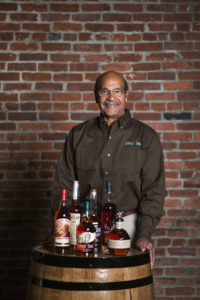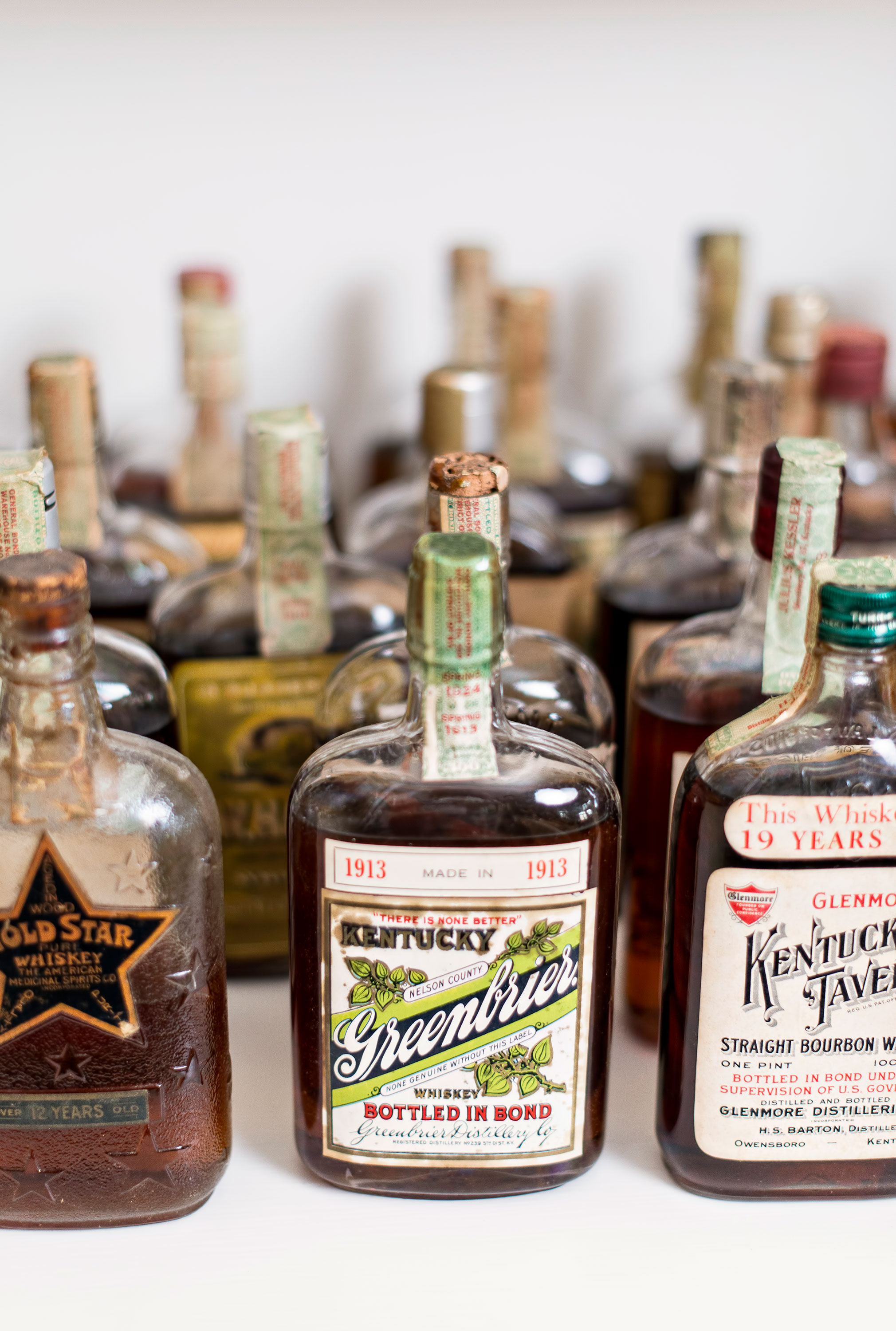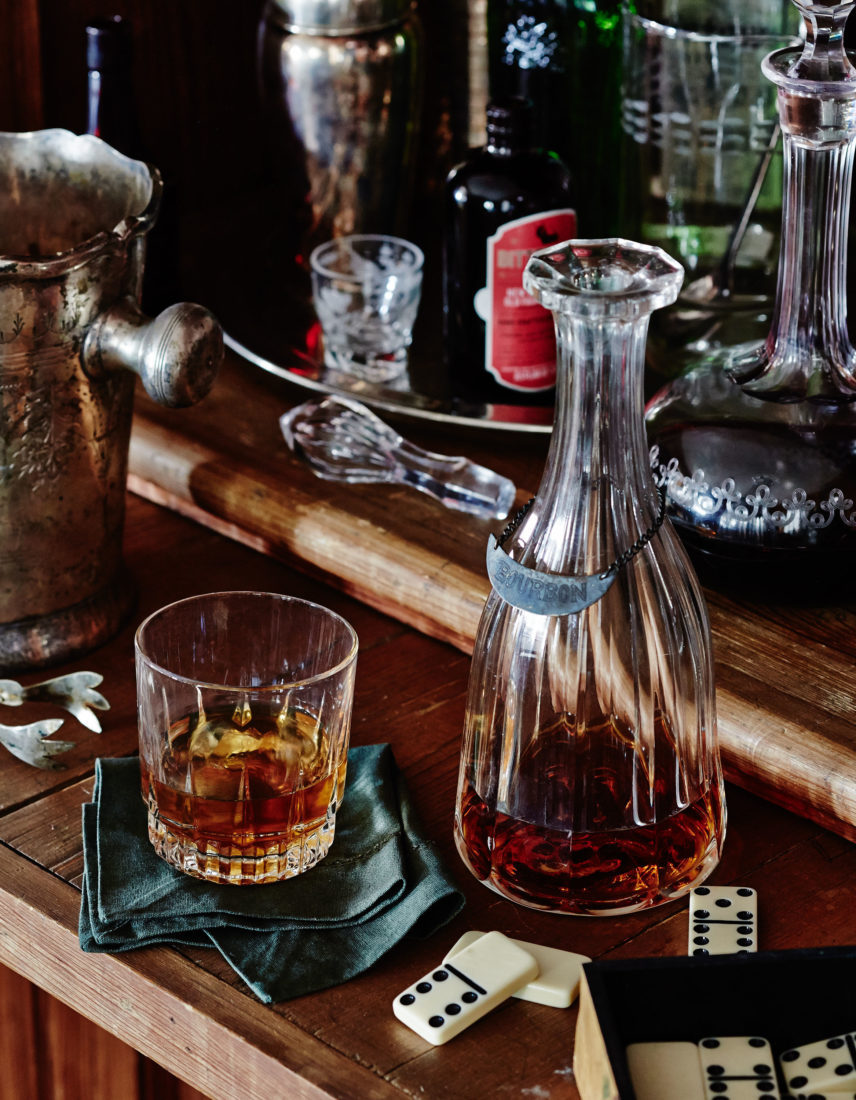Buffalo Trace tour guide Freddie Johnson pours a splash of clear whiskey fresh off the still, known as white dog, into the cupped hands of a small group visiting the Frankfort, Kentucky distillery from Osaka, Japan.
“Smell. Taste,” he says. He instructs the group to shake their hands, clap, and rub them together briskly to smell the essence of the spirit. “Clap and rub again,” he says. “Smell.” A smile of recognition lights up the face of one of the guests. “Corn,” he says. “Now one more time. Smell that? It’s like bread.”

Photo: Courtesy of Freddie Johnson
Freddie Johnson.
“The first time is the spirit, the second time is the dominant grain, and the third time is the yeast,” Johnson says. “We call it ‘waking the dog.’”
Johnson’s family roots are as steeped in bourbon as anyone at Buffalo Trace. His paternal grandfather was close friends with former company president Col. Albert B. Blanton and, legend holds, personally chose the barrels from which Blanton selected his first single-barrel bourbons. Johnson’s father started at the distillery in 1936 and worked in the warehouse. He was present for the rolling out of every commemorative millionth barrel of bourbon produced at the distillery since Prohibition—a tradition Johnson and his grandson continued when they helped roll out the seven-millionth barrel this past spring.
As a third-generation employee, Johnson educates visitors from far and wide about America’s native spirit. Here, he explains more than a dozen terms related to bourbon production, from basics like “what is bourbon?” to the finer points of barrel aging.
Basic Terminology
Mash bill: The recipe of specific grains and their percentages that are added to water and cooked individually at different temperatures to break down complex chains of starches into simple sugars. The predominant grain in bourbon is corn, along with malted barley and rye or wheat. The cooked grains are combined to create a mash, then yeast is added, which feeds on the sugars and produces carbon dioxide and ethyl alcohol as byproducts of fermentation, creating what is known as distiller’s beer. (If the yeast is freshly added, that’s a sweet mash; if it’s mixed with residue from an earlier fermentation, that’s sour mash.) The distiller’s beer is then ready for distillation.
Bourbon: “Whiskey comes off of the still, and the moment it touches the inside of a newly charred oak barrel, it is allowed to be called bourbon,” Johnson says. Though bourbon may be casually referred to as “whiskey,” it has a specific set of other regulations that set it apart from other grain-based spirits. Bourbon must contain at least 51 percent corn in its mash bill, is distilled at no higher than 160 proof, and aged at no higher than 125 proof in a new charred oak barrel (American white oak is the most common, although other species, such as French oak, are also used). Bourbon goes into a bottle at no less than 80 proof, with nothing else added beyond pure water. Barrel proof, or cask-strength, bourbons are bottled with no extra water added. Despite many a Kentuckian’s assertion otherwise, bourbon can be made anywhere in the United States.
Char: The degree to which the inside of a barrel is affected during a controlled burn, which begins to break down cellulose into caramelized sugars and release components that help give bourbon its color and complexity of flavor. Levels of char range from a light toasting to a heavy, alligator skin-like blackening. Buffalo Trace uses a No. 4 char, which is achieved with a 55-second burn that penetrates about an 1/8 of an inch into the barrel’s interior. “It resembles an English muffin, with deep nooks and crannies that allows the alcohol easier access to the caramelized sugars in the wood,” Johnson says. “The heavier the char, the quicker you can get color into the whiskey, but it’s also easier for the weight of the whiskey to pull flakes of char from the sides of the barrel as it’s moved and bumped around, which changes the flavor profile. That’s one reason we don’t rotate barrels in the warehouse. They sit undisturbed anywhere from three to 25 years.”
Rickhouse: Another name for a warehouse used to store and age barrels of bourbon. Barrels are typically stored on their sides in wooden ricks, or racks, positioned at various heights throughout the warehouse. Constructed of brick and mortar, wood, or with metal siding, most rickhouses feature rows of open windows that help maximize airflow. The bourbon expands and penetrates into the barrels’ wood in warmer temperatures, picking up flavor and color, and contracts in cooler temperatures. Col. E.H. Taylor, Jr. was the first to introduce conditioned rickhouses in America, using piped-in steam heat to warm the buildings during winter. “He discovered that by keeping the temperature of the whiskey in the barrel above 45 degrees, the movement of the whiskey in and out of the wood would continue,” Johnson says. “Below 45 degrees it goes dormant.”
Terms You’ll See on Bourbon Labels
Straight bourbon: Bourbon aged for at least two years. “If a bottle says ‘Kentucky bourbon whiskey’ and I don’t see ‘straight’ on the label, that whiskey, in most cases, is less than two years old,” Johnson says.
Single barrel: A single barrel of bourbon, often selected for its exceptional flavor profile, bottled by itself. Elmer T. Lee, the first master distiller at Buffalo Trace (it was known as George T. Stagg Distillery when he started with the company in 1949), originated the world’s first modern bourbon branded as a single-barrel release when he introduced Blanton’s Single Barrel in 1984. “Elmer T. Lee was of Scottish decent, and he modeled single-barrel bourbons after single-malt Scotch whisky,” Johnson says. The difference is that single-malt Scotches are made using a single grain—malted barley—and from multiple barrels from one distillery blended together.
Small batch: Two or more barrels blended together and packaged for release. There is no upper limit on the number of included barrels, or on the size of the distilling operation. “You might select barrels from different warehouses or from different locations within a warehouse, or of different vintages,” Johnson says. “The art in small-batch bourbon making is not in how many barrels you bring together, it’s knowing which barrels to bring together.”

Andrew Hyslop
Bottled in Bond: Bourbon made during a single distillation season (January to June or July to December of the same year) by one distiller at the same site, aged for at least four years in a government-bonded warehouse, and bottled at exactly 100 proof. These criteria date to the 1870s, when the first bourbons were bottled in glass—and some adulterated with iodine, tobacco, even turpentine. Col. E.H. Taylor, Jr., a descendant of presidents James Madison and Zachary Taylor, purchased a small distilling operation on the current Buffalo Trace site in 1870 and christened it the Old Fire Copper (O.F.C.) Distillery. Credited with modernizing the bourbon industry, Taylor was instrumental in the passage of the Bottled-in-Bond Act of 1897. The law established the first government-backed standard for the production and sale of bourbon whiskey.
Age statement: A printed indication of the youngest vintage of bourbon included in a bottle. If a bourbon doesn’t include either ‘straight’ or ‘bottled-in-bond’ on the label and is aged less than two years, manufacturers are supposed to include an age statement. Many super premium extra-aged bourbons—such as Pappy Van Winkle 23-Year—make a point of including the age on the label, although it isn’t required for bourbons older than two years. “If you look at some of the newer craft bourbons, some of them will say ‘aged four to five months,’ but they’re still charging $35 for the bottle,” Johnson says. “Proof and price are not indications of age or quality.”
Terms You Might Hear During a Distillery Tour
White dog: The clear ethyl alcohol derived from a double-distilled mash of fermented grains—AKA whiskey or moonshine. “They call it white dog because, even though it’s clear, it will bite,” Johnson says.
Angel’s share: A 3-to-4 percent annual loss of liquid in a barrel as water molecules evaporate and escape through the wood, concentrating and raising the proof of the remaining bourbon. “At twenty-three years old, you may only get five or six gallons out of a barrel,” Johnson says. A full barrel typically holds 53 gallons and weighs 550 pounds. “So with older-aged bourbons, part of the price is the taxes paid on it the whole time it sits there, while you’re also losing product through the wood.”
Whiskey thief: No, this isn’t that guy who made off with a bunch of Pappy that one time. A whiskey thief is a hollow, cylindrical tool, often made from copper, used to extract a small amount of bourbon from a barrel for sampling or quality control. A distiller removes the bung, a small circle of wood used to seal the barrel after it’s filled, and dips the whiskey thief in through the bunghole. Placing his thumb over a small vent in the end, similar to plugging one end of a straw, he traps a small amount of liquid in the thief.
Red line: A visible line in the staves of a used barrel that shows how far the whiskey penetrated into the wood as it aged. “I can put it high in the warehouse, where it’s real hot, and the whiskey is constantly pumping in and out of the wood, which produces flavors that are more in your face,” Johnson says. “Or I can put it down low in the warehouse and let Mother Nature do it a different way with barometric pressure, which allows the whiskey to penetrate deeper into the wood for a longer period of time without the heat. That’s where those older-age bourbons pick up those soft, smooth, subtle flavors.”








